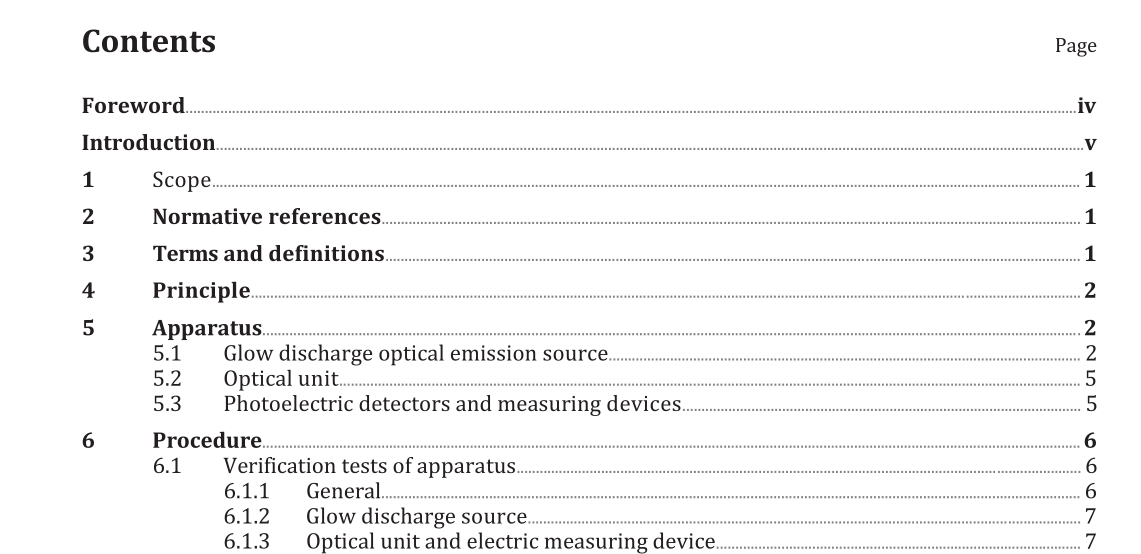BS ISO 14707:2015 pdf download.Surface chemical analysis — Glow discharge optical emission spectrometry (GD-OES) — Introduction to use
1 Scope
This International Standard provides guidelines that are applicable to bulk and depth profiling GD-OES analyses. The guidelines discussed herein are limited to the analysis of rigid solids, and do not cover the analysis of powders, gases or solutions. Combined with specific standard methods which are available now and in the future, these guidelines should enable the regulation of instruments and the control of measuring conditions. Although several types of glow discharge optical emission sources have been developed over the years, the Grimm type with a hollow anode accounts for a very large majority of glow discharge optical emission devices currently in use both for dc and rf sources. It should be noted, however, that the cathode contact is often located at the back of the sample, in e.g. the Marcus type source, rather than at the front as in the original Grimm design. It should be clearly understood that the guidelines contained herein are equally applicable to both and other source designs and that the Grimm type source is used only as an example.
4 Principle
Analysis by GD-OES involves the following operations: a) preparation of the sample to be analysed, generally in the form of a flat plate or disc of dimensions appropriate to the instrument or analytical requirement (round or rectangular samples with a width of more than 3 mm, generally 20 mm to 100 mm, are suitable); b) atomization and excitation of the analytes to be determined by means of ion sputtering and inter- particle collisions occurring in the glow discharge plasma; c) measurement of the emission intensities of characteristic spectral lines of the analytes (for depth profiling, emission intensities are recorded as a function of time); d) determination of the analyte concentrations contained in the sample by calibration with reference materials of known composition (for depth profiling, the sputtered depth as a function of time is also determined by calibration with reference materials of known composition and sputtering rates). A diagram of a typical GD-OES system is presented in Figure 1. GD-OES is based on the use of a glow discharge device as an optical emission source. The glow discharge device consists of a vacuum chamber filled with a supporting gas, usually argon. The glowing plasma, from which the discharge takes its name, is maintained by a controlled high voltage of 200 V to 2 000 V applied between the anode and cathode in the plasma gas. The solid sample to be analysed serves as the cathode.
BS ISO 14707:2015 pdf download
